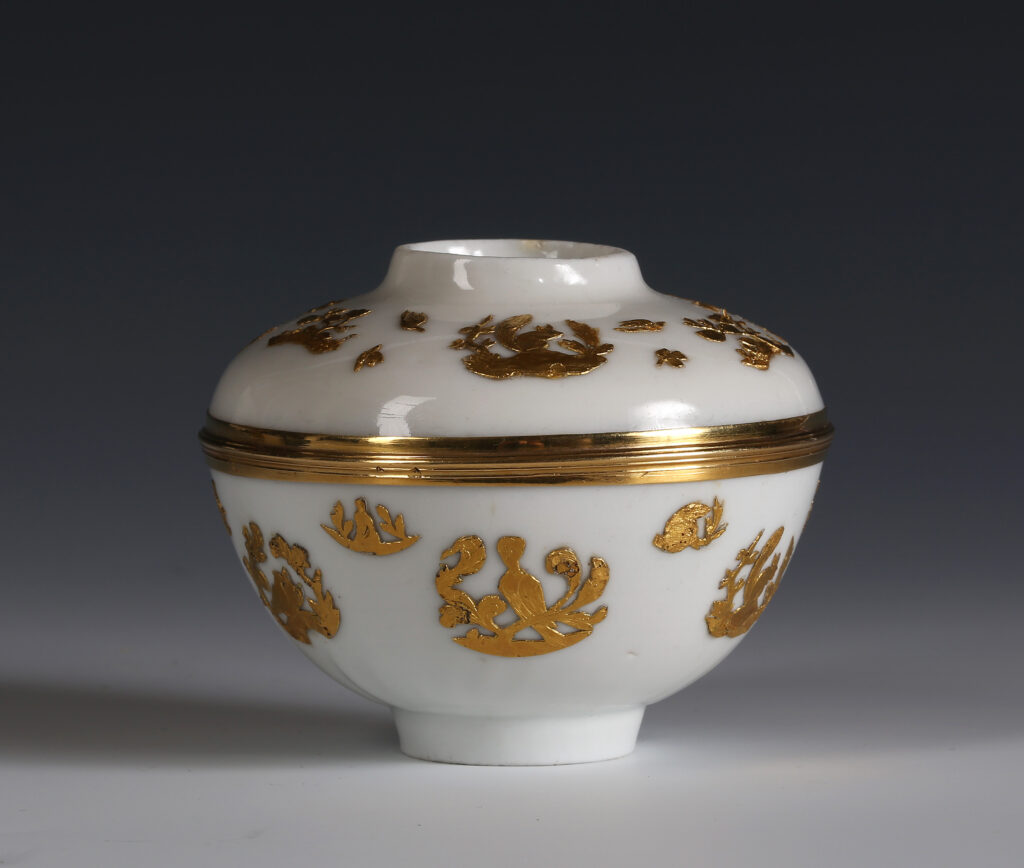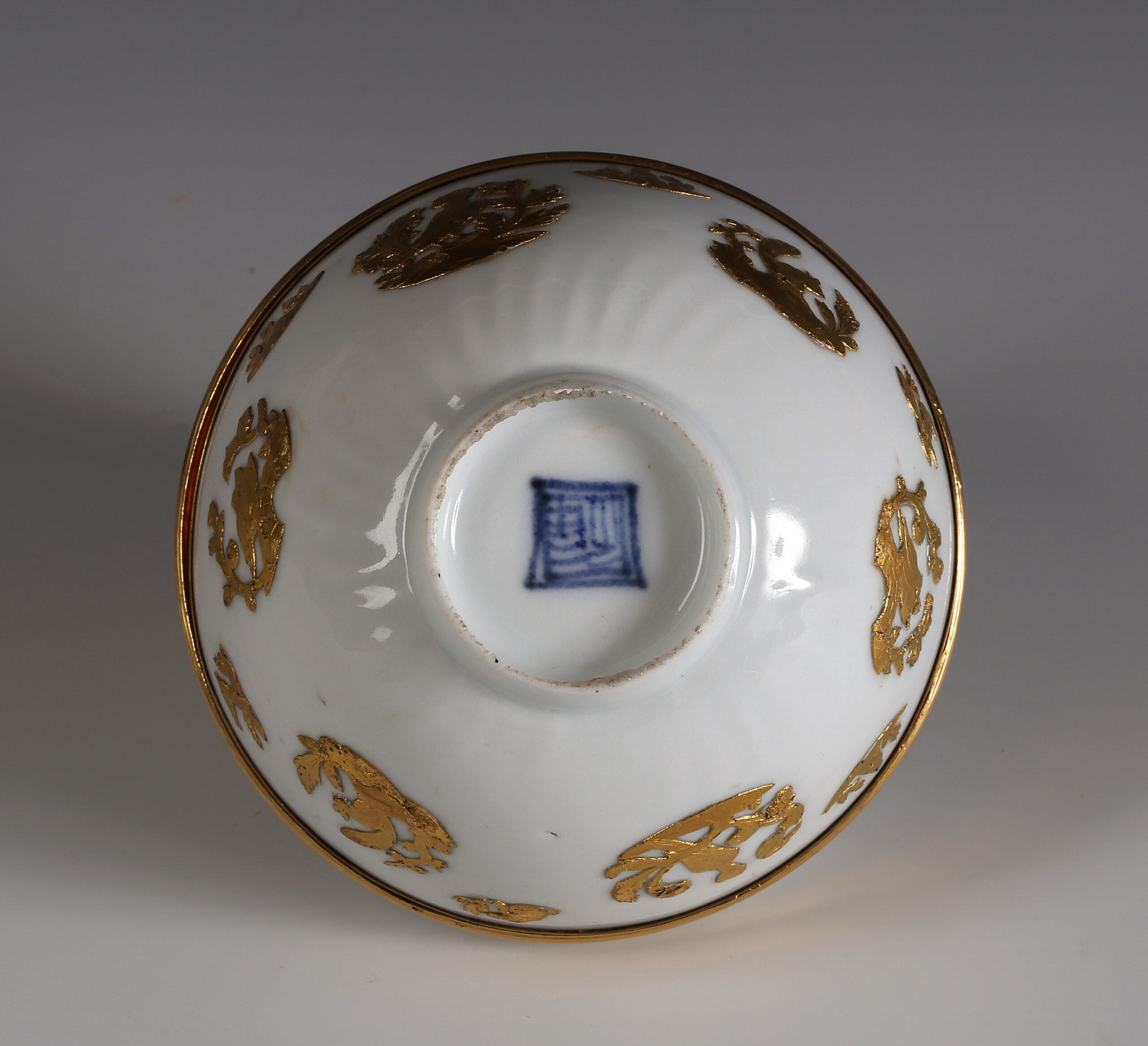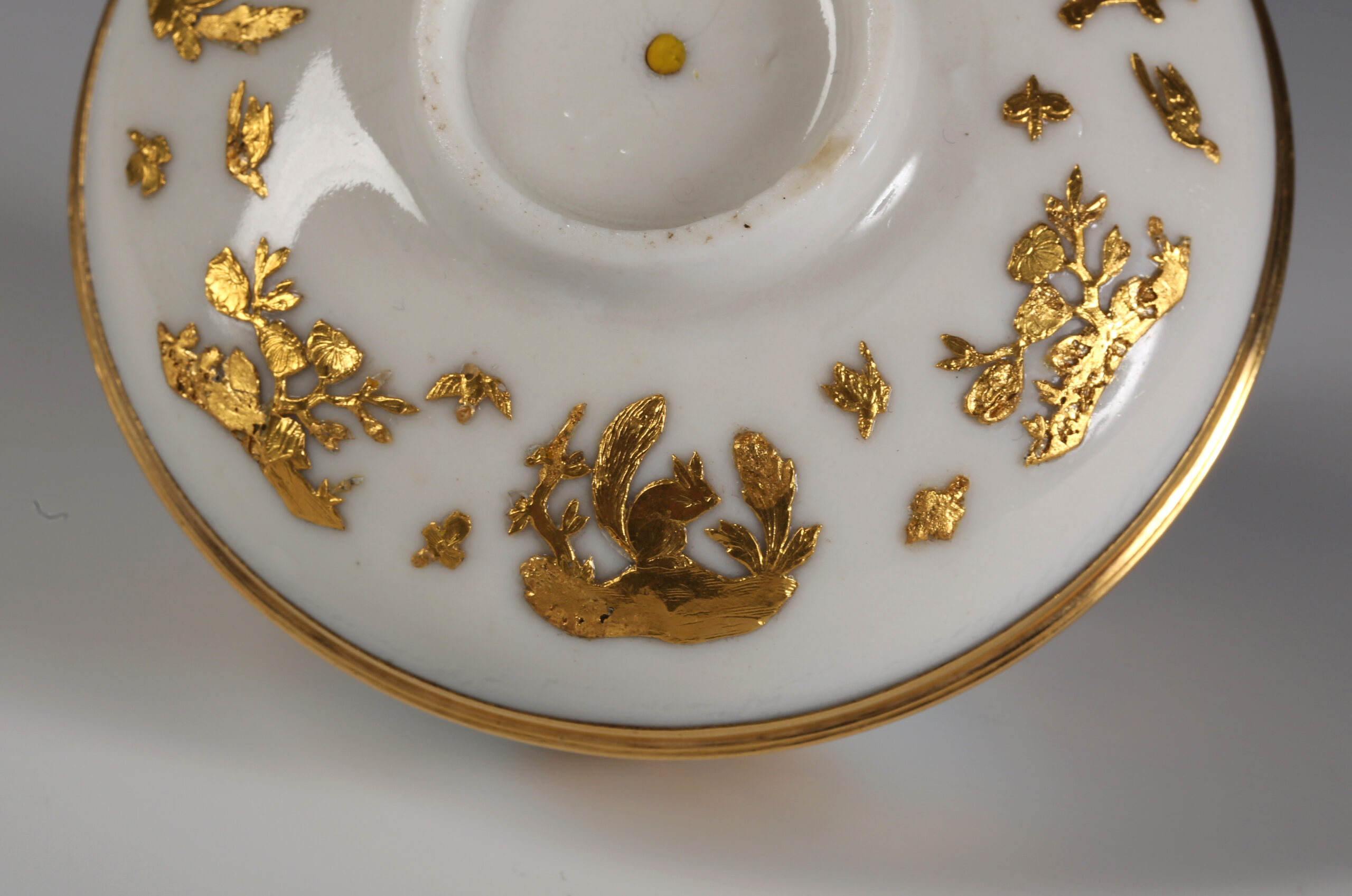
In spite of having such an active ceramic industry, there was almost no outside or independent enamel decoration of porcelain in France, but there were some rare groups of gold decoration.
There were two techniques used for the application of gold to porcelains in France in the early eighteenth century. One was to apply gold in ground or powder form bound in a medium suitable for painting, which we can call the ‘piquée d’or’ group. The other technique was to apply elements of gold foil punched with designs in die stamps or paillons, the ‘Paillon’ group. In both methods the gold was combined with a fusible glassy flux to fix it to the porcelain.
This covered bowl belongs to the group that use gold foil paillons or die-stamped appliqués. Paillon-decorated wares are found on Saint-Cloud, Meissen and Asian porcelains as well as on enamels on copper.
The communauté des paillonneurs, of Paris, which was later amalgamated into the goldsmiths’ guild in 1777, supplied die-stamped paillons to enamellers and makers of clock cases and dials. These were strips of gold foil punched into metal dies and the resulting decorative elements were applied and fired onto the porcelain over a suitable flux. The gold paillons are often quite substantial with considerable relief decoration in the thickness of the gold itself; alternatively, a thin foil was pressed into the die, and it was backed with a vitrifiable medium or enamel. In these cases one can frequently see the white backing enamel in areas where the gold has been rubbed, such as on the bottom of boxes. These pieces often have Paris hallmarks which date to just a little later than the ‘piquée d’or’ group, mostly from the mid 1720s and into the 1730s. Some are also enamelled in green over the paillons, but very rarely in any other colours, we have one beaker which is the most richly enamelled of the group.
This bowl has unusually thick gold paillons characteristic of this rare sub-group. The paillons of squirrels, an owl and other birds are motifs that do not seem to appear on other Paris pieces.
The decorator combined a Chinese, blanc de chine porcelain cover with a bowl, with an underglaze blue ‘Fu’ mark, from another minor Fujian kiln. Varied forms in completely white Asian porcelain were hard to find, this combination demonstrates the ingenuity of the workshop.
Condition:
There was probably originally a small finial.
Provenance:
Anthony du Boulay Collection
Literature:
Manners 2011
Errol Manners, ‘Gold Decoration on French, German, and Oriental Porcelain in the Early Eighteenth Century’, Journal of the French Porcelain Society, vol. IV, 2011, p. 40, fig. 23
Manners 2024
E & H Manners , ‘Decorators of Ceramics and Glass’, 2024, no. 54
Price: £15,500








